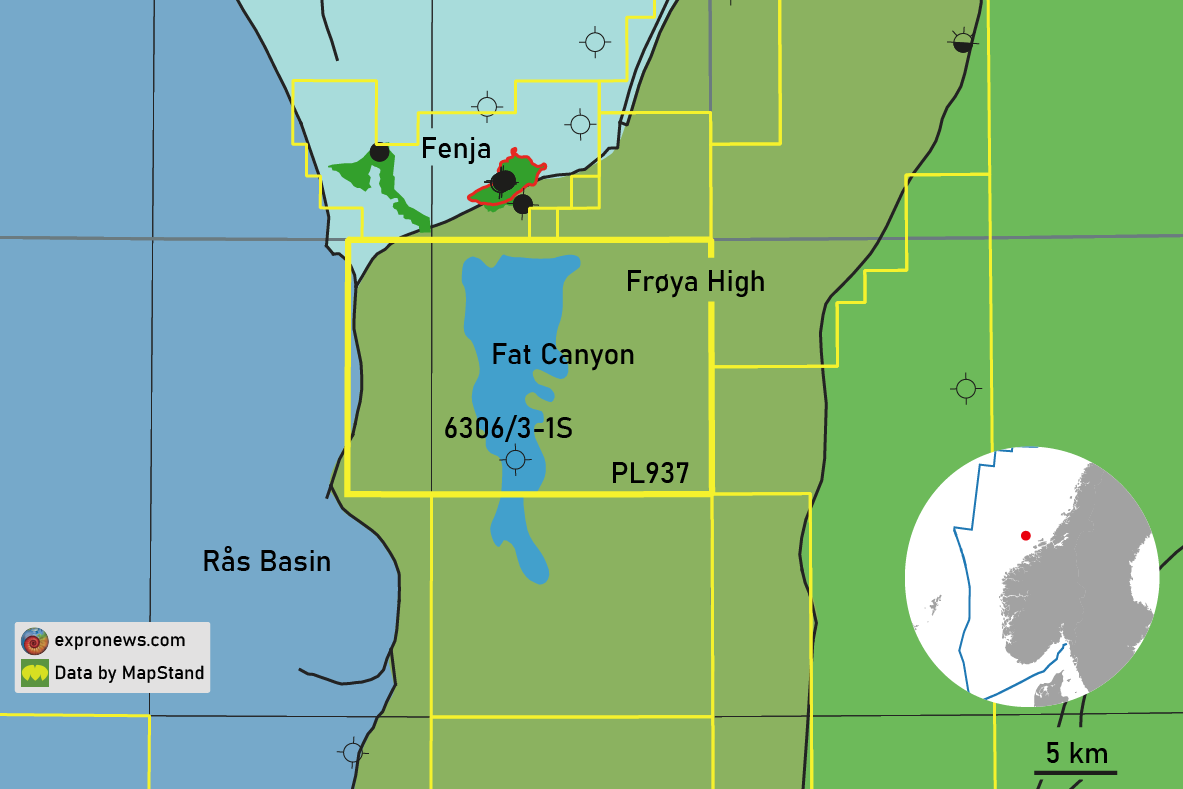As announced by the NPD yesterday, well 6306/3-1S drilled by PGNiG and Lime Petroleum (10%) in PL937 has come in dry.
It cannot be stated differently, this was a courageous well that attempted to prove prospectivity of the Frøya High to the south of the Neptune-operated Fenja field.
It is also another case where it is clear that seismic data alone must be valued with the uncertainties that come with it. As we reported on before, using seismic attributes the Fat Canyon prospect was highlighted as having elevated porosities in the Upper Jurassic to Lower Cretaceous targets, but the well results suggest differently.
The Lower Cretaceous Lyr Fm target consisted of 5 metres of calcite-cemented clay, silt and extremely fine-grained sandstone with poor reservoir quality. Although the Upper Jurassic Rogn Formation was encountered with a thickness of about 27 metres, the sandstones turned out to be calcite-cemented with poor to moderate reservoir quality.
As the sandstones drilled by the well form the updip equivalent of the reservoirs in the Fenja field a little further north, it is a surprise to see that not a single trace of hydrocarbons was found. Could that be due to another migration path, or did hydrocarbons simply never reach the prospect because of a lack of generation in the kitchen further north? These are interesting but academic questions that will not help to alleviate the disappointment at PGNiG and Lime now that the results have come in.
HENK KOMBRINK





